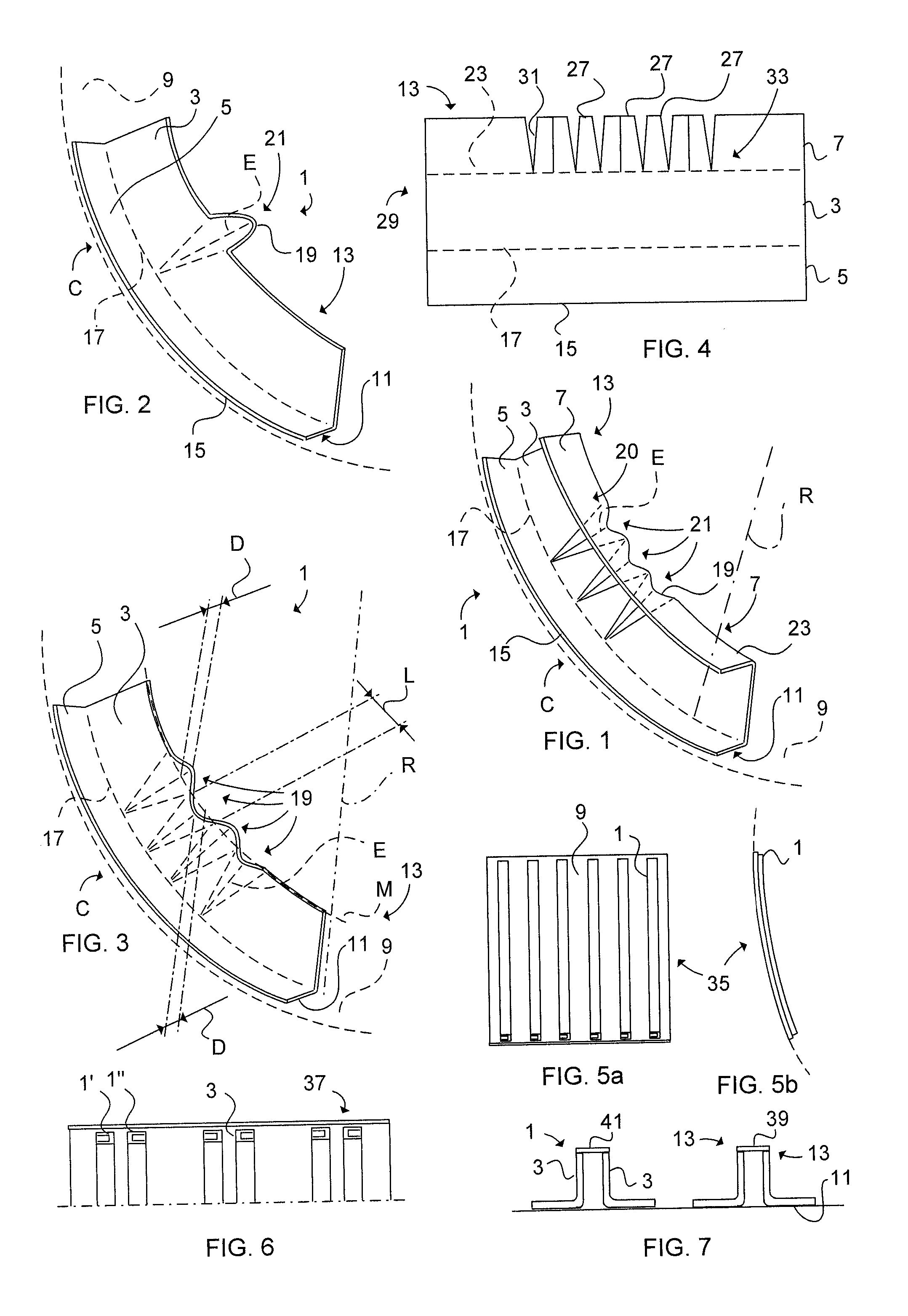Stiffening element and a method for manufacturing of a stiffening element
a technology of stiffening element and manufacturing method, which is applied in the field of aircraft industry, can solve the problems of time-consuming and labor-intensive to form aircraft ribs of composite materials, difficult to provide fibre materials, and manual work for application of prepreg materials, etc., and achieve the effect of increasing the stiffness of the stiffening elemen
- Summary
- Abstract
- Description
- Claims
- Application Information
AI Technical Summary
Benefits of technology
Problems solved by technology
Method used
Image
Examples
first embodiment
[0036] Referring to FIG. 1, a stiffening element 1 of composite material, such as thermosetting resin, comprises a web 3 and an outer 5 and inner 7 flange according to a The outer 5 flange (fixation flange) is provided for attachment to a single curved shell surface 9. The outer surface 11 of the outer flange 5 has a radius of curvature R corresponding with the radius of the single curved shell surface 9 curvature C. The inner flange 7 (free flange) includes a first elongated edge 13 which is shorter than a second elongated edge 15 of the outer flange 5. A first folding line 17 is formed between the outer flange 5 and the web 3. The web 3 comprises rounded conical bulges 19, each bulge 19 tapering from a base portion 21 of the bulge 19 essentially merging with a second folding line 23 of the inner flange 7 and the web 3. Each bulge 19 tapers in a direction towards the first folding line 17 and terminates with an apex 25 essentially merging with the first folding line 17. The bulge ...
second embodiment
[0038] Referring to FIG. 2 a stiffening element 1 comprises a web 3 and an outer flange 5 according to a The outer flange 5 (fixation flange) is formed for suitably attachment to a double curved shell surface 9. Between the web 3 and the outer flange 5 is a first folding line 17 formed. A singular bulge 19 is formed in the web 3. The reduction of length of the first elongated edge 13 of the web 3 by means of the bulge 19 provides a bent outer flange 5, still maintaining the outer flange 5 with an even surface, which is desirably.
[0039] Referring to FIG. 3 a stiffening element 1 includes four bulges 19, two of which are defined as furrows and two are defined as ridges. Respective bulge 19 has an arcuate shape (wave shaped furrows and ridges) in cross section tapering towards the first folding line 17. A complementary relationship between the radius R of curvature of the outer flange surface 11 and a reduction of length in the main direction M (centre axis) of the first elongated edg...
PUM
| Property | Measurement | Unit |
|---|---|---|
| radius of curvature | aaaaa | aaaaa |
| curvature | aaaaa | aaaaa |
| time | aaaaa | aaaaa |
Abstract
Description
Claims
Application Information
 Login to view more
Login to view more - R&D Engineer
- R&D Manager
- IP Professional
- Industry Leading Data Capabilities
- Powerful AI technology
- Patent DNA Extraction
Browse by: Latest US Patents, China's latest patents, Technical Efficacy Thesaurus, Application Domain, Technology Topic.
© 2024 PatSnap. All rights reserved.Legal|Privacy policy|Modern Slavery Act Transparency Statement|Sitemap



